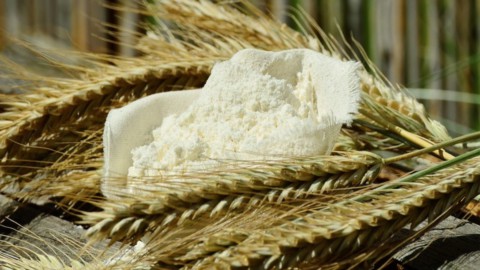From today the ancient grains grow in Monte Sante Marie, a village nestled in the hills dotted with cypresses where every year the effort and cycling splendor of the Eroica is celebrated, in the unmistakable scenery of the Crete Senesi. And they become bread, focaccia and pasta to be tasted in Tuscany.
A history of at least 1300 years, place of battles and sieges, dominion of the Medici, Monte Sante Marie is the backdrop to the project to revive a large family farm and produce ancient grains.
Daniela Mugelli, administrator of the estate, started the cultivation of the varieties of ancient wheat Verna and Senatore Cappelli with the aim of making an artisanal pasta in small quantity and traceable to such an extent that anyone who tastes it “May it grant the desire to go and touch the clods on which the wheat was born”. It is not only the nutritional aspect, particularly significant in the case of ancient grains, that has stimulated the project but also the idea of combining history and the environment, beauty and taste.
“Sowing – explains Daniela Mugelli – generally means adapting the soil to the grain with the essential use of herbicides. Ancient wheat, on the other hand, adapts to the soil and is by its nature biological and safe, with very interesting nutritional values. For example, Verna, suitable for bread making, is naturally inclined not to create intolerances having 14% less gluten than traditional wheat".
Hence the start of the enterprise that brought the Cappelli durum wheat semolina obtained from the harvest of Monte Sante Marie and stone-ground in the ancient Molino Parri of Rigomagno, to the artisan pasta factory Fabbri of Strada in Chianti, in the province of Florence to be transformed into spaghetti, tortiglioni and "Tuscan ribbons" (the latter a sort of pappardelle or tagliatelle) in 0,5kg packs.
Type 2 Verna flour, on the other hand, is packaged in 5kg and 1kg bags. Pasta and bread then arrive on the table thanks to a historic chef from Pontassieve, in the province of Florence, Stefano Frassinetti, who shared the experience of Monte Sante Marie in his "Locanda Toscani da semper", experimenting with flour and pasta and putting it also available to its patrons.
The menu dedicated to ancient wheat “can be intriguing and unusual in taste – observes Frassinetti – I propose the use of game, for example, which among other things also comes from Monte Sante Marie. The "Tuscan ribbons" are absolutely divine when seasoned with wood pigeon sauce and the flour is perfect for making bread baskets filled with the traditional liver pate.
To accompany the wild boar then there is the Schiacciata where the ancient Verna wheat is still the master. Obviously all combined with a red wine like a Chianti Rufina di Selvapiana”.






Ancient grains not only have a charm of other times, but when you mix them with flour, water (and yeast) they become divine. An unmistakable aroma is released from the oven, they have a wonderful yield in the dish and you find an authentic flavor in your mouth. This article is very interesting because it is small businesses like this that have the passion and patience to revive perhaps forgotten flavours.